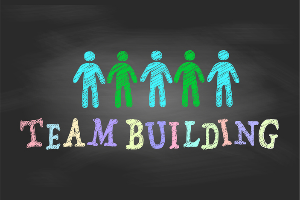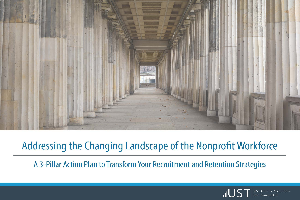
Nonprofits are driven by a mission to address societal needs and provide public benefits. This distinguishes them from profit-driven enterprises. While their primary focus isn’t financial gain, nonprofits must still navigate the economic landscape to sustain their operations and fulfill their missions effectively.
So, how do nonprofits make money? What strategies do they employ to fund their vital initiatives and programs?
Let’s dive into the topic of how nonprofits make money to ensure they can continue to make a positive impact on the communities they serve.
How to Make Money as a Nonprofit
In the realm of nonprofit management, the pursuit of financial sustainability is a perpetual endeavor. The following multifaceted strategies and avenues help nonprofits secure the resources necessary to advance their missions effectively. Here’s a look into how to make money as a nonprofit.
Traditional Donations
At the core of nonprofit funding lies the generosity of individuals and corporations. Their contributions fuel the organization’s mission-driven initiatives. These donations, whether large or small, provide the essential lifeline for sustaining operations, funding programs, and driving innovation. They empower nonprofits to make meaningful strides toward societal change.
Cultivating strong donor relationships, implementing effective fundraising campaigns, and showcasing transparent stewardship of funds are key to maximizing the impact of traditional donations. They foster long-term support for the organization’s endeavors. Additionally, demonstrating the tangible outcomes and transformative impact of donor contributions strengthens trust and loyalty. This inspires continued engagement and philanthropic support from both individuals and corporate partners.
Grants
Beyond individual donors, nonprofits often rely on foundation grants and government funding to support their initiatives. These grants offer significant financial backing, enabling nonprofits to undertake ambitious projects, expand their reach and address pressing societal issues. However, securing grants requires meticulous research, strategic alignment with funders’ priorities and robust grant management practices. All of this effort is to ensure compliance, accountability, and sustainable impact. Nonprofits must demonstrate their capacity to deliver measurable outcomes and effectively steward grant funds to maintain credibility and foster future funding opportunities.
Fundraising Events
From galas to auctions and charity walks, fundraising events serve as not only revenue-generating opportunities but are also powerful tools for community engagement and awareness-building. These events create platforms for supporters to rally around the nonprofit’s mission. They forge lasting connections and inspire ongoing support. Nonprofits can amplify their fundraising efforts and broaden their impact by leveraging creative event planning, effective marketing strategies, and volunteer mobilization.
Earned Income
Nonprofits are increasingly exploring alternative revenue streams beyond traditional fundraising methods. Social enterprises, fee-for-service programs, and merchandise sales offer avenues for generating income while advancing the organization’s mission. Whether through the sale of products, services, or experiences, nonprofits can diversify their revenue sources. This revenue helps them achieve greater financial resilience in an ever-changing landscape.
Corporate Sponsorships and Partnerships
Collaborating with businesses presents nonprofits with a myriad of opportunities beyond financial support. Corporate sponsorships and partnerships offer a gateway to expanded visibility and promotional exposure. They enable nonprofits to reach broader audiences and raise awareness for their causes. These collaborations also foster employee engagement. This encourages corporate staff to volunteer, fundraise, or participate in community service initiatives alongside nonprofit personnel.
In addition to financial contributions, businesses often bring valuable resources to the table. Their expertise often includes in-kind donations to access specialized expertise and networks. Through strategic partnerships, nonprofits can leverage these resources to enhance their capacity, innovate their programs, and extend their reach.
Investments
For financially stable nonprofits with a substantial financial base, investments offer the potential for additional income generation and long-term sustainability. Through investments, nonprofits can diversify their revenue streams and build financial reserves to weather economic uncertainties and fund future initiatives. This approach strengthens the organization’s financial footing and enhances its ability to adapt to changing market conditions. The nonprofit is able to seize new opportunities for growth and impact.
Reducing Costs for Nonprofits
The question, “How do nonprofits make money?” is a viable one, but income is not the only concern for these charitable organizations. While revenue generation serves as the lifeblood of nonprofits, prudent management of expenses is equally crucial for long-term sustainability.
By implementing strategies to enhance operational efficiency, nonprofits can streamline processes, reduce waste, and optimize resource utilization. The following are a few strategies nonprofit organizations use to reduce costs:
These concerted efforts not only optimize financial resources but also enhance organizational resilience and agility. Understanding how to make money as a nonprofit involves a combination of revenue generation and cost reduction.
Are You Still Wondering, “How Do Nonprofits Make Money?”
So, how do nonprofits make money? In the dynamic landscape of nonprofit management, the pursuit of both revenue-generating and cost-saving opportunities is critical for organizational success and sustainability. Nonprofits can position themselves for long-term growth and impact by embracing innovative strategies, fostering strategic partnerships, and prioritizing financial stewardship.
We urge nonprofit leaders and stakeholders to harness the insights and recommendations outlined in this guide. You’ll quickly recognize the transformative potential your organization holds for advancing its mission and creating meaningful change. At UST, we empower nonprofits to thrive, inspire, and continue their vital work in building a brighter future for all. For additional support and resources, explore our UST solutions. Our experts will guide you toward operating a more sustainable and impactful nonprofit organization.

As a nonprofit organization, it is essential to have a cohesive and productive team in order to efficiently achieve your mission and goals. Implementing team-building activities can significantly strengthen the bond among team members, improve communication and collaboration, and enhance overall team performance.
Research has shown that team-building activities have a positive impact on employee engagement and job satisfaction. By providing opportunities for team members to interact and work on common goals, you are creating a sense of belonging and promoting a positive work environment. This translates into better retention rates and higher productivity. Moreover, team-building activities can help identify and address areas where improvement might be needed, such as conflict resolution. As a result, team members will develop skills that are not only beneficial in the workplace but also transferable to other areas of life.
Apart from the benefits for team members, team-building activities can also benefit the organization as a whole. By fostering a positive work environment, you are more likely to attract and retain talented and dedicated volunteers and employees. You can find countless team building ideas depending on the desired outcome and your team’s culture. Below we explore the benefits of team building exercises for nonprofit employers and their employees.
1. Enhances Communication: Team building exercises enhance communication among nonprofit employees. As team members get the chance to know each other better, communication improves, leading to smoother and more efficient interactions, which aligns your workforce towards a common goal.
2. Builds Trust: Trust plays a significant role in any work environment. Team building exercises are designed to enhance the feeling of trust between colleagues, opening opportunities to share personal experiences while building respect and empathy—making it easier for teams to work cohesively.
3. Increases Productivity: When employees have the chance to connect through team-building activities, they’re more likely to produce high quality work. Team building activities can relay positive effects on an organization’s productivity and performance, thus creating a better work environment.
4. Encourages Creativity: Various team building activities allow team members to think outside the box and provide practical solutions to organizational challenges. A team with a creative mindset is more likely to come up with unique problem-solving solutions that align with the organization’s progress.
5. Promotes Inclusivity: Team building activities promote inclusion by providing a platform that promotes a positive and healthy work environment for each member of the team. Promoting inclusivity makes every member in the workplace feel valued and appreciated, which creates a comfortable and accommodating atmosphere in the workplace for everyone involved–endorsing diversification.
Implementing team-building activities at your nonprofit organization can have a significant impact on team performance, job satisfaction, employee engagement, and overall mission achievement. It is an investment that will pay dividends in the long run.

America’s charitable nonprofits serve and nurture people of every age, gender, race, and socioeconomic status—supporting at-risk communities nationwide.Due to the sensitive information being collected from program participants, volunteers, and donors alike, nonprofits are more vulnerable to a wide range of risks. And with the continuing advancement of technology, cybersecurity has become an increasingly important issue for which many nonprofits are ill-prepared to deal with.
Any unmitigated risks could easily threaten your nonprofit’s livelihood and derail your organizations operations. Discover how you can create business practices that safeguard your reputation, your donors, and the communities you serve in this on-demand recording.
In this session, we explore:
Upcoming UST Live Webinars: This webinar series was designed to equip nonprofits with the strategies and resources they need to survive (and thrive) in a constantly evolving environment. Be on the lookout for future UST Live sessions.

Creating a positive culture in the workplace should be a priority for every nonprofit employer. A positive work environment can help increase employee engagement, morale, and productivity, which are all essential to a nonprofit’s success. Creating a positive culture doesn’t have to be time-consuming or expensive – small steps can add up to big results if done consistently over time. With effective communication, positive reinforcement, and team-building activities, nonprofit employers can create an environment that sets their organization apart from the rest. By investing in their employee’s well-being, nonprofits can ensure that they are creating a positive culture that will help them achieve their mission.
With that being said, here are five simple tips to help nonprofit employers create a positive culture in the workplace:
Bonus Tip – Show Appreciation: Taking the time to thank your team members or recognize their hard work goes a long way in creating positive morale and creating an engaged workplace culture. Consider setting up reward systems or recognizing special achievements such as employee of the month awards to show your appreciation for their efforts. This is a great way to boost motivation and keep positive energy flowing in the workplace!
Creating positive cultures within organizations can be beneficial for both employers and employees. By implementing these five tips, you can take steps to build a positive work environment that will help foster engagement, morale, and job satisfaction.

While many foundations are well on their way with going mobile, start-ups and smaller organizations may still be trying to figure out how to establish a mobile presence in addition to their website and email operations. There are important matters to consider, the first of which is to determine what is considered a mobile device.
GFC Global describes a mobile device as “a general term for any type of handheld computer. These devices are designed to be extremely portable, and they can often fit in your hand. Some mobile devices—like tablets, e-readers, and smartphones—are powerful enough to do many of the things you do with a desktop or laptop computer.” Mobile devices run on mobile operating systems—the two major operating systems are Android and iOS.
Most nonprofits have a website that interacts with and receive donations from other PCs. Many have a Facebook or Twitter account to announce events and direct visitors to the main website for more information and to donate to their cause.
Not all institutions dedicated to good works have adapted their internet sites to interact with mobile devices or optimized those sites so that they can at least be viewed on mobile devices. Increasing numbers of nonprofits are catching on to the benefits of connectivity with mobile devices but before examining the pros and cons of transitioning, here are some compelling statistics about mobile device use.
First is a demographic shift in smartphone ownership in this survey report from the Pew Research Center (1/13/2022) by Michelle Faverio. “The (2021) survey found that 96% of those ages 18 to 29 own a smartphone compared with 61% of those 65 and older, a 35-percentage point difference. However, that gap has decreased from 53 points in 2012. The survey also showed that 95% of those ages 30 to 49 reported owning a smartphone in 2021 and 83% of those 50 to 64 said the same.” Going mobile is not just for Gen X, Millennials, and Gen Y.
In his article forthe site Exploding Topics, Internet Traffic from Mobile Devices(2/7/23),Josh Howarth affirmed, “Internet use and mobile use are components of everyday life for billions of people. In fact, for many, the two now go hand in hand.” What follows are selections from his breakdown of “the current state of mobile devices in 2023.”
Howarth maintained that “e-commerce is among the most popular (use) for mobile devices. Indeed, more than half of the online population (55.4%) are likely to have bought something online in the past month with their mobile device.” It is into this larger e-commerce category that charitable donations would fall.
Looking forward, he concluded, “There are 4.66 billion active internet users. And 4.32 billion active mobile internet users. Notably, those figures are almost identical. The discrepancy between active social media users (4.2 billion) and active mobile social media users (4.15 billion) is even smaller.”
Howarth paints a dynamic vision of the future for nonprofits deciding to go mobile. Let’s examine both the pros and the cons for foundations that haven’t stepped onto the fast track yet.
Marita Meegan, writing for fundaisingIP.com, wants you to pause and consider Is Your Website Optimized for Mobile Devices? She recommends that you learn how many people visit your site from mobile devices. If you don’t have an analytics program on your site, she recommends Google Analytics, which is free to download and use. With Google Analytics or your own program, you can determine how many people drive by your site and the make and model of their internet jalopy.
She also encourages you to look at how your site appears on the variety of mobile screens types out there. Larger tablets will probably display your site correctly, but smaller tablets and smartphones will not reflect the site’s optimal appearance and will require design modifications to accommodate the different types of screen sizes that your analytics reveal. Observe how well your site functions on those screens, especially the donation pages.
She offers useful tips to pare your site down for optimal appeal and usability on smaller screens. A simple design that functions well with easy navigation will make the mobile version of your site more user-friendly and seem more trustworthy.
Ms. Meegan ventures into the pro and con territory when she asks Should Your Non-Profit Have a Mobile App? On the pro side are variety, flexibility, and apps tailored to your organization’s needs and specialization. There are apps for all kinds of digital appetites, ranging from Red Cross emergency tips to a geo locator for fundraising events, not to mention apps for donation and check out. You determine what you need at the outset and what you can do without for now because big apps can cost significant money. An app, she cautions, will continually incur costs for your nonprofit. Software requires upgrading each time something changes on a device’s operating system. Updating your app can be costly: security updates, data protection, bug fixes, upgrades and more—and for each platform you design it for. Again, a careful study of your analytics will help you determine which platforms and apps can get you the best mileage to see a ROI. She suggests third-party apps might meet your budget needs.
As it should be obvious by now that going mobile is the way everything is going, PRO and CON might best be reframed as PROPOSAL and CONSIDER. Best-selling finance author Robert Kiyosaki teaches that we should never say to ourselves, “I can’t afford it” when presented with an opportunity, but that we should instead ask ourselves “How can I afford it?” So, stepping outside the PRO and CON box and into a space of Proposal and Consider, we can weigh some of the more widely expressed concerns about going mobile.
| PROPOSAL | CONSIDER |
| Mobile apps are difficult to manage. | Mobile apps streamline daily operations, automate tasks, and integrate them on one platform, saving time and resources. |
| Texting is laborious and a time suck. | Mobile texting can reach large numbers of people in a blink of time. Templates can help. |
| How is text-to-give secure? | Text-to-give forms protect transactions and donor data. |
| Getting someone to create new apps can be expensive. | Third-party companies like AppMySite provide a user-friendly, DIY, no-code,mobile app builder that makes creating premium native mobile apps accessible for nonprofits.These apps you can build in minutes to work with Android and iOS. It costs less than an in-house app designer, but it also gets you started for free. |
| Nonprofits think their donor base is older and won’t use smart phones. | Mobile users span multiple generations. There is no digital divide here, only growing numbers of mobile users of all ages. |
| Managing volunteers with a mobile device sounds like herding cats. | A volunteer mobile app reduces the volunteer management process with self-serve features to enhance communication, recruitment, training, more. |
| How can you raise funds with a simple, plain text message? | Ask candidates and staff from last year’s midterm elections how they raised funds in minutes with a simple text-to-give alert versus direct mail or email. |
| Has text-to-give been around long enough to demonstrate its usefulness? |
Donation via text has been part of disaster response since Hurricane Katrina in 2005. But text-to-give really took off after the 2010 Haiti earthquake, when the American Red Cross raised more than $32 million within one year. It was also around for the first Ice Bucket Challenge, and that Challenge went from viral to phenomenal. |
A final thought about going mobile. Ask yourself, “How can mobile technology connect with my mission and connect my mission to others?” The answer may sound like a good song about a car.
This blog post was written by Amélie Frank, consulting copywriter to UST. To learn more about Amélie’s professional portfolio you can find her online at https://www.linkedin.com/in/amelie-frank/

No matter where society struggles or how much change comes to your nonprofit, everything always comes down to the people who form your team and support your community. If you lack the flexibility and resilience to confront perilous forces such as socioeconomic upheaval, a pandemic, or a workforce revolution, your organization runs the risk of collapse.
In order to achieve stability, nonprofits need to reinforce the steadfast support of a dedicated staff. Download the bundle to uncover strategies for:
For just $19, this information-packed bundle gives you access to a wealth of helpful resources—including our Changing Nonprofit Workforce eBook and Toolkit—filled with the tools you need to support a dynamic workforce.

From recruiting and training to engagement and retention, your organization has likely invested a great deal of time and effort into ensuring your volunteer program is successful. Volunteers make up an essential part of a nonprofit’s workforce—making effective volunteer management strategies vital to an organization’s day-to-day operations and key to developing and maintaining volunteers that are knowledgeable, passionate and dedicated.
In the latest rendition of UST Live, we were joined by thought leaders from across the U.S. with expertise in volunteer management. Discover how your nonprofit peers are improving volunteer retention rates while increasing engagement and what you can do to keep volunteers excited about the work your nonprofit does to support its surrounding communities in this on-demand recording of the session. You’ll also discover:
Upcoming UST Live Webinars: This webinar series was designed to equip nonprofits with the strategies and resources they need to survive (and thrive) in a constantly evolving environment. Be on the lookout for future UST Live sessions.

Some argue that they couldn’t prepare for the pandemic, because it was a black swan event—defined as unforeseeable. While that may be true, it’s imperative to develop and implement better defenses against future incidents—regardless of forewarning. Whether the next calamity is a virus, an extreme weather event, or something else, the effects to your nonprofit can be mitigated. Take strategic steps now to protect your clients, workers, continuity of services, and overall sustainability from whatever the future may bring.
Three Major Threats
Start by understanding and correcting three common vulnerabilities. First, study your supply chain and its logistics risks. Those with global supply chains may be at higher levels of vulnerability to any kind of worldwide incident. Next, make sure to complete your survival plan to manage your continuity in the event of any kind of shutdown or crisis. And third, understand that communication helps to reduce uncertainty, so develop a clear communication plan with your team and partners. Once you’ve taken these initial steps, you’re ready to deep-dive into real preparedness.
Three Keys to Recovery
Nonprofits strengthen their resilience through robust, faster, and more inclusive post-disaster rebuilding. When the process is robust, organizations become less vulnerable to future disruptions; when it’s fast, people can get back to their normal life earlier; and when it’s inclusive, nobody is left behind in the recovery process. Now, imagine that public and private stakeholders across the land are performing the same process. This can include small and large governmental agencies, for-profit companies, private citizen groups, and nonprofit organizations. Encourage your nonprofit to join the conversation, as everyone pulls together to build back better, with faster communication, inclusive thinking, and robust planning.
The Unfolding Future and Disaster Risk Reduction
The effects of climate change are already increasing destruction and the risk of life globally. Many are already seeking ways to mitigate and prepare for upcoming disasters. Flood, fire, and disease are on the rise, as we continue to survive through natural disasters such as earthquakes and tsunamis. The United Nation’s 2015 Global Assessment Report on Disaster Risk Reduction (GAR) predicted that “the risk of economic losses is rising as a result of the rapidly increasing value of assets that are exposed to major hazards.” In addition, a large proportion of losses continue to be associated with small and recurring disaster events that severely damage critical public infrastructure, human lives, animal and wildlife, agriculture, housing, and production.”
It is no longer practical to put off disaster preparedness in the hope that it won’t happen. True, nonprofits must work within limited budgets, often relying on the ingenuity of their leaders. Because of this, the best plan for long-term resiliency is to integrate sustainability into everything your nonprofit does. Resilience means that your nonprofit will be able to adapt and recover rapidly from disruptions due to emergencies.
No matter how devastating an emergency might be, recovery can take place. It might require months or even years, but when communities work together, balancing short-term objectives and long-term goals, involving all stakeholders, and following a common vision for the future – they can pull together funding from more sources, additional technical support, and information gleaned from other nonprofits to build back better, stronger, more adaptable, and more resilient.
The good news is various programs are now available to reduce the impact of natural, technological, and human-made events on your nonprofit’s community. The National Hazard Management Association (NHMA) has developed the Disaster Risk Reduction Ambassador Curriculum (DRR) in cooperation with FEMA. The DRR Ambassador Curriculum helps community stakeholders find ways to understand and prepare to implement programs and measures handling the entire disaster cycle – pre, during and post disaster. This supports nonprofit and other community leaders as they engage in community-level discussions with multidisciplinary educational resources, self-study materials, and training workshops. You will find three stand-alone modules, each taking about 1 to 2 hours to complete. Whether or not you can complete this training, your nonprofit could benefit from the aid of a DRR Ambassador. They come from various backgrounds and groups with the goal of helping their communities take strong proactive steps to mitigate risks from natural hazards. Bold decision-making comes from a process of education and discussion, but the rewards will take your organization beyond the minimal protection provided by existing federal standards.
DRR Ambassadors use a reference guide titled Building Your Roadmap to a Disaster Resilient Future. The Roadmap provides ideas for community disaster risk reduction along with explanations and hyperlinks to a wide array of technical and other resources needed at various junctures. Communities that avail themselves to NHMA’s program are clearly better prepared to face natural disasters in the future.
The Seven Basics
Here are seven important steps to a stronger, more resilient future:
Conduct annual risk assessments. Begin by seeing the potential scale of a hazard. Three areas deserve special consideration in gauging risks:
Cross-train employees with a clear training plan. Do your best to triage topics so they learn CPR and first aid first. Teach an escape plan, disaster preparedness, and preparation for other risks to life. Additionally, help employees train to work in additional roles and under different working conditions, such as a temporary worksite.
Stock up on supplies. Your team might be required to shelter in place at the office. Are you prepared with three days of shelf-stable food and water—enough for everyone? Remember to keep fresh hand sanitizer, anti-bacterial wipes, gloves, masks, flashlights, batteries, blankets, and phone chargers well-stocked for emergencies. Note expiration dates.
Save for a rainy day. Try to build up a cash reserve equal to three to six months of your nonprofit’s expenses. A 3-month fund should be considered bare minimum. If you have a 6-month fund, you will be prepared for unexpected opportunities.
Put your people first. Enact policies to address your staff’s needs during an emergency. Help them handle their primary concern, their families, so they can then focus on your nonprofit. Plan for work-from-home options and possibly providing childcare. Also, take some time each year to review your paid leave, health insurance, and sick leave policies. How might you build in more flexibility? Set guidelines for hazard pay to help those working in essential roles under tough conditions. Show them they are valued to motivate your team during challenging events.
Re-examine and diversify your fundraising efforts. If you’ve always relied on an annual gala event, it’s time to consider additional funding options. Build your adaptability in the event of closures. If you already have a variety of sources, conduct an audit to see which are the most successful and find ways to grow those.
Apply what you’ve learned. The pandemic provided vast learning opportunities. Explore all your strategies—from policies that protected your employees’ health to ways you handled financial losses. What worked? What didn’t? Consult your organization’s stakeholders including experts, like accountants and lawyers. Be proactive in fixing what didn’t work and promoting what did.
Agility and the Post-COVID Landscape
Are you exhausted from deploying stop-gap measures? Have you been slashing budgets, shifting services online, and doing whatever else you can to help your community and protect your nonprofit? The truth has become obvious. Each challenge is only one in a series of ongoing crises that will continue to threaten your organization. You must develop a frame of mind that continuously generates fresh, new solutions – with creativity and resourcefulness. Integrating sustainability is key to adapting more rapidly to crises. Those organizations that were committed to this before the pandemic struck were better able to navigate the challenges it brought.
Many nonprofits discovered to their dismay that the tools and policies they had in place as pre-planning prior to COVID failed to manage the speed, scale, breadth, and duration of all the pandemic’s impacts. Advance investments in your human and social capital that will help. Your team’s awareness of several potential pressures that could combine toward disaster will help you move toward best-practice management of your potential risks.
While you deploy stress tests and other exercises to prepare for the future, think about how your team has communicated during the pandemic. Everyone was forced to reconsider presuppositions and communicate clearly, no matter how fluid the situation. So now, you must encourage innovative thinking, rehearse dynamic situations and seek to empower your workers to own and manage risk within their scope of influence. This is one way of weaving resilience into the fabric of your organization’s culture. Investing in your staff first, helping them to communicate effectively with stakeholders, and building their leadership skills will position your nonprofit to better navigate future crises.
You’ve seen how everything is connected. Natural events, social order, and economic systems all flow together to impact your nonprofit. More than ever, events strike with ferocious speed and impact requiring sudden changes in strategy. We will continue to feel the increasing effects of climate change, deepening inequality, biodiversity loss, political upheaval, and more. Work with your nonprofit’s leadership to be clear, decisive, and authentic in all communication with the team so that everyone places their priorities in alignment, and your organization will be better prepared to pivot.
The following guiding principles have helped other nonprofits maintain their equilibrium as they’ve worked with donors, boards and government agencies to spark endless innovation:
• Keep going. Your ability to pivot might not always look perfect, but it will fail completely if you allow yourself to be stopped by disruptions. Many nonprofits were deeply challenged by the shift to virtual services, but those with an unrelenting attitude were eventually able to adapt. You must keep moving, trying, pushing, and innovating.
• Question fundamental assumptions, so you can imagine being part of a changed future. Take time to evaluate the changing political, physical, social, economic, and health needs of your community and targeted population. How should your mission and vision change? Be sure to test the appropriateness of multiple approach options, then explore how you might scale your chosen best result, and finally how you might escape the drag of longstanding processes that restrict fresh approaches. These three steps will empower you to solve complicated challenges.
• Focus on the most vulnerable. While it’s important to work toward larger dreams for the future, try to avoid leaving behind marginalized community members. Solutions that you devise for the most marginalized populations will find their way to help the larger society, too.
• Small steps add up to big changes. Start with small, rigorously tested ideas. Your methodology will mean everything as you design a process for continuous, everyday innovation. Start with one small problem. Generate promising ideas. Then, come up with early prototypes so that you can test, gauge, and improve whichever one has the best potential to make the most impact. Rapid prototyping is a more flexible and cost-effective approach than major initiative launches.
With each bit of urgency in a crisis, there is also opportunity. Innovate by surveying community members, brainstorming ideas, and rapidly developing simple prototypes of the most promising solutions. Start with the most severely impacted in a crisis and scale it up later. Seizing the moment could help you lead your nonprofit past whatever has blocked change in the past. You might feel like you’re building the jet plane during take-off, but when you factor in creativity, energy, enthusiasm, and constant learning … your odds of staying aloft are good.
Aim Toward Social Purpose
While many nonprofit leaders feel pressured into focusing on financial health, a broader view will help in providing more sustainability. Social purpose, with a clear understanding of your desired impact, will guide your decisions as you seek to balance your budget against your capacity to deliver impact. COVID-19 will eventually retreat into the past, but it has left in its wake a lasting effect on how we determine our effectiveness. Keeping social purpose in mind, follow these priority takeaways:
• Social Impact. No matter how society shifts, a sharp focus on your intended impact and theory of change will help you stay relevant. If you’re forced to forge new partnerships, alter your services or advocate in new ways, reexamining your social impact is critical to informing all decisions. As community need rises, develop new ways to deliver services while maintaining public support.
• Economic Viability. If you’re struggling to handle increased demand with disruptions in funding, you’re not alone. These destabilizing conditions could threaten your long-term financial wellness, and some threats will no doubt continue in the future. Sustainable nonprofits must have reliable funding and predictable expenses as well as cash on hand for routine and emergency expenses. Develop processes for managing your financial viability. First, take a clear and detailed assessment of your financial situation. Second, plan for various financial scenarios and emergencies. Finally, be honest with all your stakeholders including donors. Ask the tough questions, such as who plans to donate again. For better planning, you need to know.
• Capacity to Deliver. Four core ideals will help you maintain services. First, you must set up a strong and distributed leadership that can pivot in response to dynamic challenges. Second, your team must be flexible, recognizing potential changes in member needs, client behaviors, and the general community landscape. Third, look for more ways to collaborate with other nonprofits and agencies. Consider public-private partnerships. Make sure your cultural values are clear, give your team cooperative skillsets, and build incentives from the top-down, so your leaders model collaboration. Fourth, build your capacity for technological improvements. Work out the training your staff will need and establish whether technology can help you scale up services while lowering your long-term costs.
Under the Radar
Most companies have a new take on teleworking, which will change where people live. Depending on the nature and location of your mission, you might notice a subtle shift in populations. COVID-19 and other recent events have sparked this interest in landscapes amenable to social distancing, home-centered work, and a small-town quality of life. In ways similar to those wrought by the last century’s industrial revolution, macro-socioeconomic shifts caused by the pandemic could mean big changes are coming. Eventually, large cities could see decreased demand for services while small-town nonprofits experience growth in supportive community members.
Your new battleground might be at the digital divide, fighting to provide reliable high-speed internet access to all, especially in rural areas. Nonprofits and NGOs should recognize the opportunities for local communities collaborating to put the COVID crisis behind, overcome the challenges of social unrest, and work together toward solutions. It shouldn’t surprise you to learn that real estate agents in small towns across America have become partners toward social change, as the National Association of Realtors published information on equity, stabilization, and developing community engagement for their members.
Rural and suburban communities are remaining online. In fact, growing their online presence, like online crowdfunding, becomes a viable financial resource for nonprofits. Most of all, keep your eyes open for further societal evolution—perhaps, the next macro-adjustments will alter the very core of your nonprofit.
This is an excerpt from UST’s eBook, “3 Key Strategies for Nonprofit Resiliency: Preparing for Future Crises” in collaboration with Beth Black, Writer and Editor.

In the latest rendition of UST Live, we were joined by thought leaders from across the U.S. with expertise in succession planning. Guest moderator, Jennifer Hutchins from the Maine Association of Nonprofits, lead the conversation as the group discussed how organizations nationwide are experiencing a shift in the workforce as employees seek out other opportunities. Whether a transition occurs due to an unexpected vacancy or the anticipated departure of a long-tenured leader, it’s vital that nonprofits have a succession plan in place to ensure organizational sustainability.
The group also discussed why proactively addressing how your leadership needs will evolve in the future and identifying activities to strengthen leadership capacity can help create the resiliency and agility an organization needs to thrive.
Watch now to discover:
Upcoming UST Live Webinars: This webinar series was designed to equip nonprofits with the strategies and resources they need to survive (and thrive) in a constantly evolving environment. Be on the lookout for future UST Live sessions—scheduled for November.

Working on a team requires more than just hard work, morale amongst co-workers, and willingness to work with others. The most important yet often ignored that attributes to a team’s success is effective communication. Communication is a vital part of any business environment—especially a nonprofit organization since many employees wear multiple hats—as it facilitates a consistent flow of information. When it comes to team communication, the purpose of interacting among co-workers is to share information that is essential to achieving organization goals. In addition, good communication makes it easy for team members to coordinate with one another effectively.
An organization’s communication strategy usually consists of techniques that encourage open communication and effective teamwork in a workplace environment. Having an action plan in place for your organization can help to improve your communication skills, work on team building, and executive tasks efficiently. This kind of proactive leadership is even more important today, given the rise of remote teams and virtual collaboration.
Here’s just a few of the many benefits that result from an effective communication strategy:
1) Supports Employee Engagement: Effective communication in the workplace increases employee morale and engagement by helping team members feel connected to the work they’re doing and the organization their working for. Thoughtful team-building activities can also help nurture communication skills, which improves camaraderie and employee engagement. Increasing employee engagement can lead to reduced turnover, a better customer experience, and even increased profitability
2) Helps with Productivity: Inefficient work habits or missed project deadlines are almost always the result of poor workplace communication skills. By using effective communication strategies, you can be clearer about expectations and ultimately get the results you need to deliver projects in a timely manner.
3) Opens Up Doors for Innovation Opportunities: An environment of open communication in the workplace fosters creative problem solving, more adventurous ideas, and out-of-the-box thinking. It helps you create space for innovation by fostering a “no bad ideas” attitude and encouraging your team to try new things—even if those projects don’t work out as anticipated. Making space to learn from different collaboration styles can really expand the possibilities for your organization.
Effective communication in the workplace might sound straightforward but it’s about so much more than having a simple conversation—especially when not everyone communicates the same way. You need to be intentional and use the right strategies that provide diverse opportunities for both formal and informal communications across the organization. By employing communications strategies that foster open communication and collaboration, you can build an organization full of employees who are engaged, efficient, and innovative. And that’s the kind of team that makes an organization successful and most importantly, support the communities you serve.

UST maintains a secure site. This means that information we obtain from you in the process of enrolling is protected and cannot be viewed by others. Information about your agency is provided to our various service providers once you enroll in UST for the purpose of providing you with the best possible service. Your information will never be sold or rented to other entities that are not affiliated with UST. Agencies that are actively enrolled in UST are listed for review by other agencies, UST’s sponsors and potential participants, but no information specific to your agency can be reviewed by anyone not affiliated with UST and not otherwise engaged in providing services to you except as required by law or valid legal process.
Your use of this site and the provision of basic information constitute your consent for UST to use the information supplied.
UST may collect generic information about overall website traffic, and use other analytical information and tools to help us improve our website and provide the best possible information and service. As you browse UST’s website, cookies may also be placed on your computer so that we can better understand what information our visitors are most interested in, and to help direct you to other relevant information. These cookies do not collect personal information such as your name, email, postal address or phone number. To opt out of some of these cookies, click here. If you are a Twitter user, and prefer not to have Twitter ad content tailored to you, learn more here.
Further, our website may contain links to other sites. Anytime you connect to another website, their respective privacy policy will apply and UST is not responsible for the privacy practices of others.
This Privacy Policy and the Terms of Use for our site is subject to change.
UST maintains a secure site. This means that information we obtain from you in the process of enrolling is protected and cannot be viewed by others. Information about your agency is provided to our various service providers once you enroll in UST for the purpose of providing you with the best possible service. Your information will never be sold or rented to other entities that are not affiliated with UST. Agencies that are actively enrolled in UST are listed for review by other agencies, UST’s sponsors and potential participants, but no information specific to your agency can be reviewed by anyone not affiliated with UST and not otherwise engaged in providing services to you except as required by law or valid legal process.
Your use of this site and the provision of basic information constitute your consent for UST to use the information supplied.
UST may collect generic information about overall website traffic, and use other analytical information and tools to help us improve our website and provide the best possible information and service. As you browse UST’s website, cookies may also be placed on your computer so that we can better understand what information our visitors are most interested in, and to help direct you to other relevant information. These cookies do not collect personal information such as your name, email, postal address or phone number. To opt out of some of these cookies, click here. If you are a Twitter user, and prefer not to have Twitter ad content tailored to you, learn more here.
Further, our website may contain links to other sites. Anytime you connect to another website, their respective privacy policy will apply and UST is not responsible for the privacy practices of others.
This Privacy Policy and the Terms of Use for our site is subject to change.